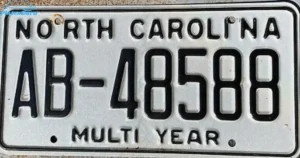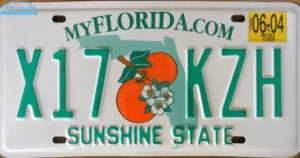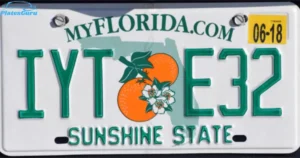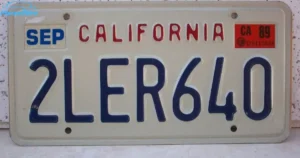The time it takes to tint windows can vary based on several factors, including the type of vehicle, the number of windows, the type of tint film used, whether old tint needs to be removed, and whether the job is done by a professional or as a DIY project.
For a professional tinting job on a typical four-door sedan, it generally takes around 2 hours to tint all four windows. However, larger vehicles like SUVs or minivans might take anywhere from 4 to 6 hours due to having more windows or larger windows to cover.
If only the front windows are being tinted, the process can be quicker, typically taking about 30-45 minutes. The removal of old tint can add significantly to the time required, potentially taking anywhere from 30 minutes to several hours depending on the adhesive’s resilience and the tint’s age.
Several factors can influence the duration of a window tinting project
- Number of Windows: More windows generally mean longer tinting time. For instance, a vehicle with six windows will take longer than a vehicle with only two.
- Type of Film: High-quality, pre-cut films can speed up the process compared to rolls of tint that need to be measured, cut, and trimmed.
- Window Shape: Complex shapes and curves can complicate the installation, requiring more time.
- Old Tint Removal: Existing tint must be removed before applying the new film, which can be time-consuming.
- DIY vs. Professional Installation: While DIY projects might take longer due to less experience and possibly needing to repeat steps, professionals can typically complete the job more efficiently due to their skills and experience.
For DIY projects, the time can vary more widely. On average, tinting a car’s windows yourself might take about 3-4 hours for the whole vehicle, or about 30 minutes per window if you’re working at a moderate pace and with a reasonable level of skill.
It’s also important to consider the curing time post-tinting, which can range from a few days to several weeks depending on the type of tint and the environmental conditions. The tint needs this time to dry and adhere properly to the windows without interference.
Choosing the right time of year for tinting can also affect the outcome. Spring and summer are generally recommended for tinting projects due to higher temperatures and humidity levels, which can aid the curing process of the tint film.
What Factors Influence the Length of Time Window Tint Takes?
Several factors influence the length of time it takes for window tint to cure or the duration required to apply window tint effectively. These factors can significantly affect the overall time from start to finish, including preparation, application, and drying or curing time.
Type of Tint Film
Different tint materials and qualities, such as dyed, metalized, carbon, and ceramic tints, have varying application processes and drying times. High-quality films like ceramic may take longer to cure due to their density and composition.
Number of Windows
The more windows you are tinting, the longer the process will take. Vehicles with more windows or larger windows, such as SUVs or minivans, require more time to tint compared to a sedan with fewer windows.
Complexity of Window Shapes
Windows with complex shapes or curves can take longer to tint. The intricacy of the window design requires more time for precise application and adjustment of the film to avoid bubbles and wrinkles.
Removal of Old Tint
If old tint needs to be removed before applying new tint, this can add a significant amount of time to the project. The time required depends on the condition of the old tint and the difficulty of its removal.
Weather Conditions
The curing time of window tint can also depend on the ambient temperature and humidity. Tint films typically cure faster in warm, sunny conditions compared to cooler, humid, or cloudy weather.
DIY vs. Professional Installation
Professional installers, due to their experience and expertise, can usually apply window tint faster and more efficiently than DIY enthusiasts, who might need to take extra time to ensure correct application.
Type of Vehicle
The size and model of the vehicle can impact the time it takes to tint windows. Larger vehicles with more complex window designs require more time for a thorough and proper tint application.
How To Check If The Window Tint Has Dried?
To check if window tint has dried properly, observe the clarity of the windows. Initially, the tint may look hazy or cloudy due to moisture trapped between the film and the glass. As it dries, this haziness should gradually disappear, resulting in clear windows.
You can also gently touch the edges of the window film (avoiding the center or large areas to prevent fingerprints) to see if it feels securely attached to the glass without any slipping or sticky sensation, indicating the adhesive has cured.
However, avoid rolling down the windows or applying pressure to the film until you are certain the drying process is complete, which, as mentioned earlier, could take anywhere from a few days to a few weeks depending on various factors like tint type, weather conditions, and humidity.
Mistakes To Avoid While Applying Window Tints Yourself
When applying window tints yourself, avoiding common mistakes can lead to a smoother installation process and a more professional-looking outcome. Here are some key mistakes to watch out for:
- Not Cleaning Windows Properly: Before applying tint, it’s crucial to thoroughly clean the windows. Any dirt, dust, or residue can cause bubbles and imperfections in the tint film. Ensure the windows are completely clean and dry before starting.
- Failing to Measure and Cut Precisely: Measure the tint film carefully and ensure it fits the window size and shape before applying. Inaccurate measuring and cutting can lead to gaps or excessive overlap, affecting the appearance and effectiveness of the tint.
- Ignoring the Window’s Curvature: Many car windows are not perfectly flat but have a slight curvature. When applying tint, it’s important to account for this by shaping the film to match the window’s curve, often requiring the use of a heat gun to shrink the film accordingly.
- Not Using a Squeegee to Remove Air Bubbles: After applying the tint film to the window, use a squeegee to smooth out the film and remove any air bubbles. Failing to eliminate air bubbles can leave unsightly blemishes and potentially affect the tint’s durability.
- Applying Tint in Suboptimal Conditions: Temperature and humidity can significantly affect the tinting process. Avoid tinting in extremely hot, cold, or humid conditions, as this can hinder the film’s ability to adhere properly and cure correctly.
- Removing the Liner Too Early: The tint film has a protective liner that should be removed gradually during the application process to prevent contamination with dust or fingerprints. Removing it too early can make the film difficult to manage and affect the final outcome.
- Using Low-Quality Tint: Investing in high-quality tint film is crucial. Low-quality tints may not offer the same level of UV protection, heat reduction, or durability, leading to quicker fading, peeling, or bubbling.
- Rushing the Process: Patience is key when applying window tints. Rushing through the preparation, application, or curing process can result in mistakes that are difficult to correct without starting over.
How long does it take to tint 2 windows?
Tinting two windows typically takes around 1-2 hours, depending on the complexity and size of the windows.
How long does it take to get windows tinted?
Getting windows tinted usually takes around 2-4 hours, depending on the number, size, and complexity of the windows being tinted.
How long does it take to tint car windows?
Tinting car windows typically takes around 2 to 4 hours, depending on the number of windows, the complexity of the vehicle, and the experience of the installer.
FAQs
Which window tint takes longer to cure?
Ceramic tints generally take longer to cure compared to other types due to their denser composition. They may require 4-10 days for the drying time, which can be longer in cooler, less humid conditions.
Is tinting your own car windows difficult?
Yes, tinting your own car windows can be challenging, especially if you lack experience. It requires a reasonable amount of skill, product knowledge, and the right tools. Mistakes can be costly and affect the appearance and functionality of the tint.
How long does it take to apply tint to the two front doors?
Applying tint to the two front doors typically takes about 30-45 minutes when done by a professional. The time can vary based on the specific vehicle and window shapes.
Is window tinting really worth it?
Yes, window tinting can be worth it for various reasons such as reducing glare, protecting against UV rays, enhancing privacy, and improving the overall aesthetics of a vehicle.
How long do windows have to stay up after tint?
Windows typically need to stay up for at least 24-48 hours after tinting.
How long does it take for window tint to fully cure?
Window tint can take anywhere from a few days to several weeks to fully cure.
How long does it take to tint 5 windows?
Tinting 5 windows usually takes around 2-4 hours.
Does tint get darker as it cures?
Yes, tint often appears darker as it cures.
See more related post: How long does it take to tint a car?
Conclusion
The time required for window tinting varies based on factors such as vehicle type, number of windows, tint film quality, and whether it’s a professional or DIY job. Typically, tinting a sedan takes about 2 hours, while SUVs or minivans might take 4-6 hours. Front window tinting can be quicker, around 30-45 minutes, while removing old tint adds extra time. Curing time post-tinting is essential, ranging from days to weeks, with factors like tint type and weather conditions influencing it. Professional installation tends to be faster and more efficient than DIY attempts.









Keep up the great work! Thank you so much for sharing a great posts.